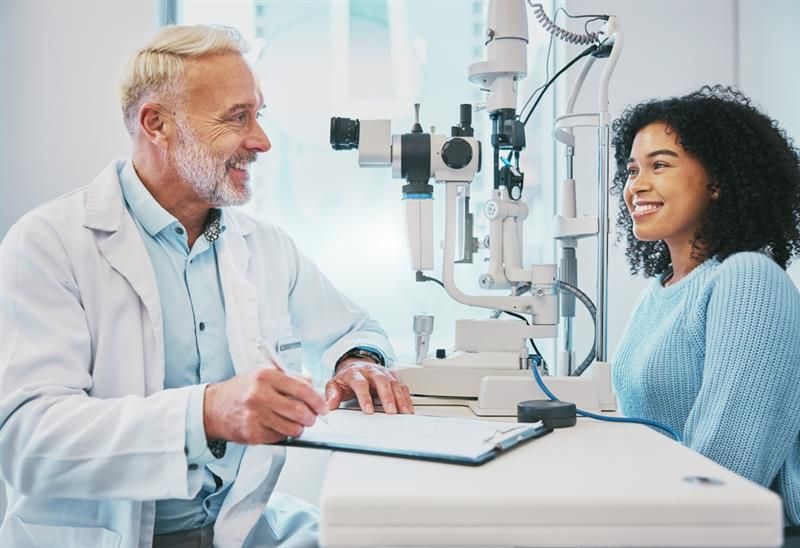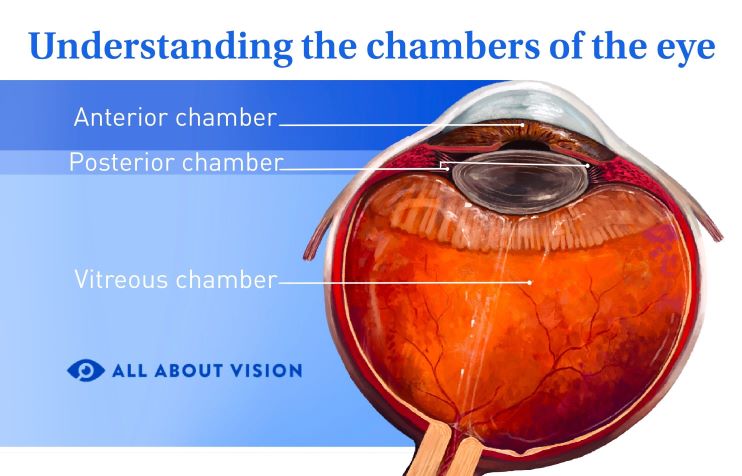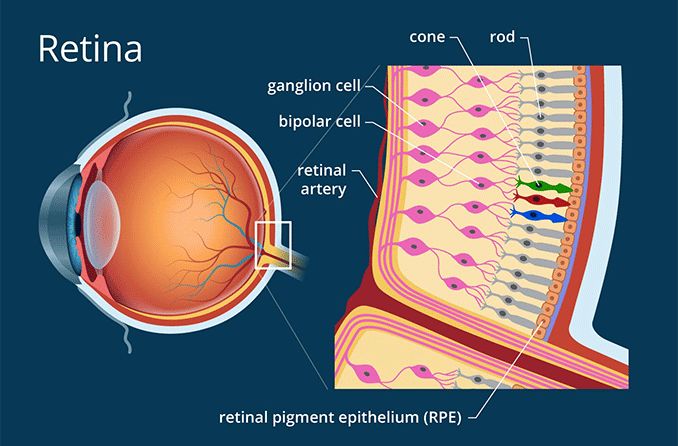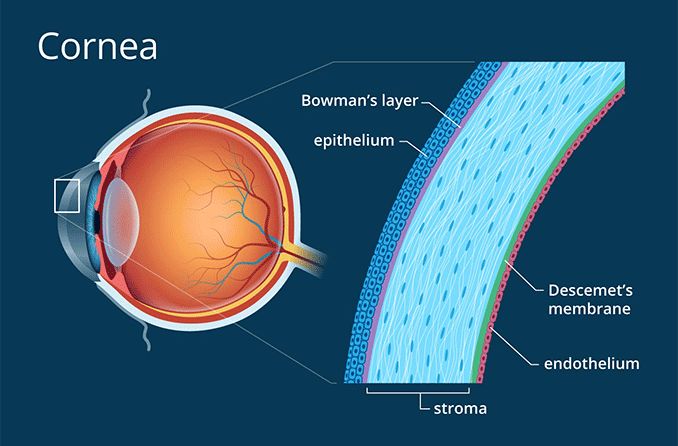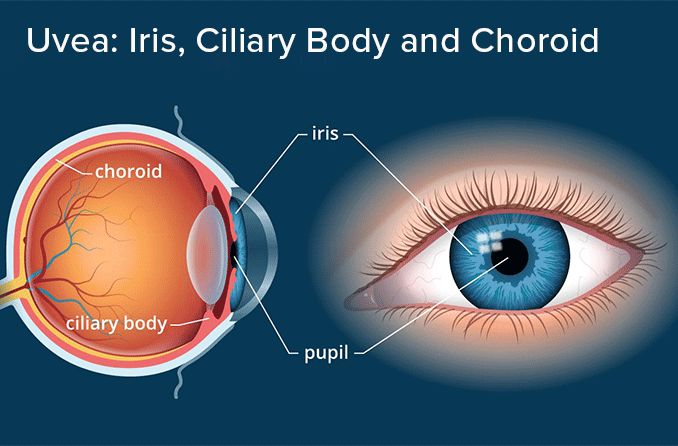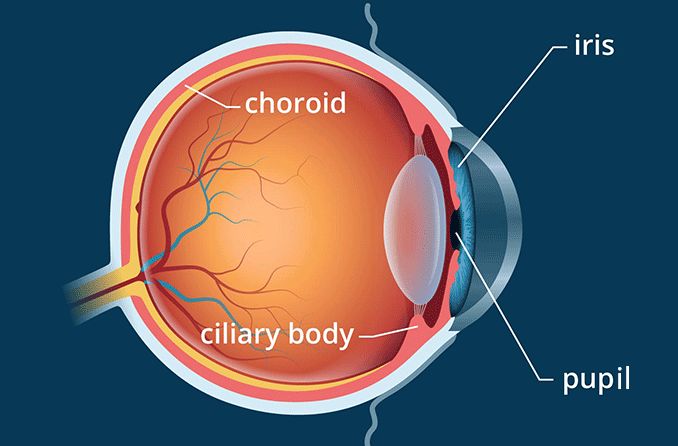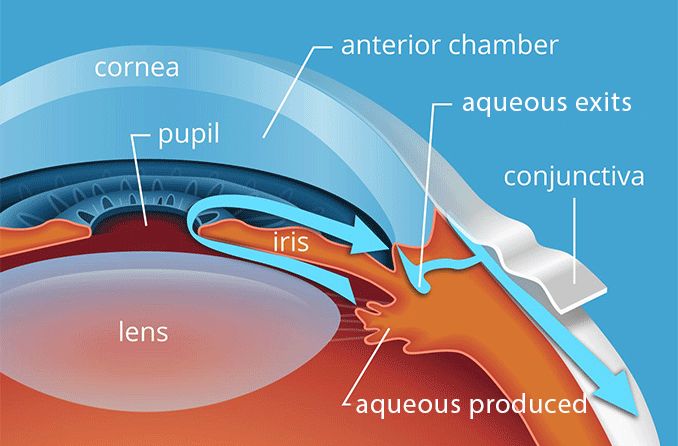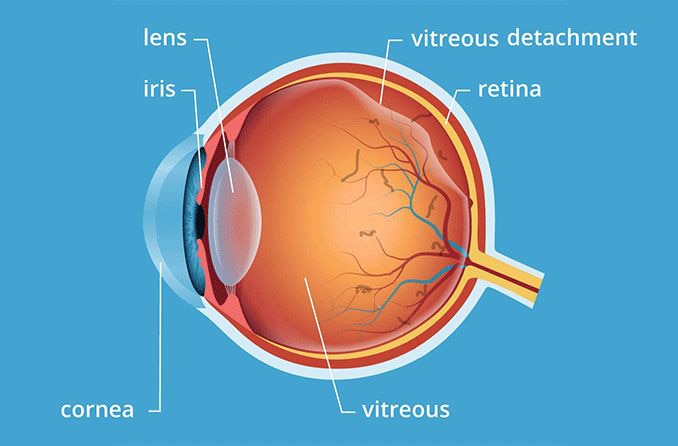Common disorders related to the eye's chambers
Several disorders of the eye are related to the anterior, posterior and vitreous chambers of the eye, including:
Glaucoma
Glaucoma is often associated with high pressure inside the eye. It is important to note, however, that although high IOP is common in glaucoma, it can also be normal in some cases (called "normal tension glaucoma").
A proper balance of aqueous humor production and drainage is essential for maintaining healthy eye pressure. The aqueous humor drains from the eye through the drainage angle, where the iris meets the cornea.
A spongy structure, called the trabecular meshwork, lies at this angle. If the trabecular meshwork is not draining properly or the angle is narrow, the aqueous humor builds up, increasing eye pressure.
When pressure damages the optic nerve, which connects the eye to the brain, a diagnosis of glaucoma is made. Optic nerve damage can cause vision loss, beginning with peripheral vision. Routine eye exams are important because they help detect optic nerve damage early.
There are two main types of glaucoma, and they are classified based on whether the drainage angle is open or blocked:
Primary open-angle glaucoma
In primary open-angle glaucoma (POAG), the drainage angle remains open. This is the most common type of glaucoma in the U.S. Even with an open angle, there is resistance to the flow of aqueous humor out of the eye. This resistance can elevate a person’s eye pressure (IOP). Sometimes, higher production of aqueous humor can also contribute to high IOP.
This type of glaucoma often develops slowly over time. Symptoms, such as a gradual loss of peripheral vision, are often not noticed until the condition has progressed.
Primary angle-closure glaucoma
Primary angle-closure (or narrow-angle) glaucoma (PACG) can develop gradually or occur suddenly. In PACG, the drainage angle is blocked or narrowed. When this occurs, the drainage of aqueous humor is obstructed. As a result, eye pressure increases. People with PACG usually experience sudden and painful vision loss due to the rapid increase in IOP. This condition is serious and requires immediate medical attention.
The size and shape of the anterior chamber can affect how aqueous humor drains from the eye. A shallow anterior chamber is linked to farsightedness (hyperopia) and a higher chance of developing PACG. The PACG risk is greater because a shallow chamber can make the drainage angle narrow. As people get older, changes in the eye can make the drainage angle even narrower, raising the risk of PACG.
Symptoms of acute (sudden onset) angle-closure glaucoma include:
- Severe eye pain
- Eye redness
- Seeing halos or colored circles around lights
- Rapid loss of vision
- Headache
- Feeling sick or vomiting
Symptoms of chronic angle-closure glaucoma may vary. Some individuals experience them while others do not. When symptoms do occur, they can include:
- Eye redness
- Mild eye discomfort
- Blurry vision
- Aching in the head or above the eyes
Factors that can increase the risk of narrow angles include:
- Having a family history of angle-closure glaucoma
- Being over age 60
- Being female
- Having smaller eyes
- Having a shallow anterior chamber
Gonioscopy is a procedure performed by eye doctors to help determine if the drainage angle in the anterior chamber is open enough to allow aqueous humor to drain properly. The eye doctor uses a lens and specialized instruments to see and assess the drainage angle.
Treatment of PACG includes medications to help lower the pressure in the eye quickly if there is a rapid onset of high pressure. Once the pressure is reduced, a surgery called laser peripheral iridotomy (LPI) is typically recommended. This surgery makes tiny holes in the iris with a laser to help the aqueous humor drain better. This can help prevent another attack in the future.
Cataracts
As people age, the natural crystalline lens of the eye can become cloudy, a condition known as a cataract. This lens is located behind the posterior chamber and in front of the vitreous chamber. It changes shape to focus images at various distances. A cataract’s clouding of the lens makes it more difficult for light to pass through and focus properly on the retina.
Symptoms of cataracts include:
Early stages of cataracts are usually managed with:
- A new eyeglasses prescription
- Magnifying glasses
- Brighter lighting
Once the cataract progresses, cataract surgery is typically recommended. The most common method is using ultrasound to break up the cloudy lens and replace it with an artificial intraocular lens (IOL).
Vitreous detachment
As people age, the vitreous humor inside the eye naturally shrinks and can pull away from the retina. This process is called posterior vitreous detachment. This usually happens after age 50 and is very common in people over 80.
The most common sign of a vitreous detachment is a sudden increase in floaters — small dark spots or squiggly lines that drift across vision. These are shadows cast on the retina by the separating vitreous fibers. Some people also notice flashes of light in their peripheral vision.
If you have these symptoms, you should see an eye doctor right away. Only a dilated eye exam can determine if there are any complications, such as:
- Retinal tear – A tear in the retina, which can lead to retinal detachment if not treated quickly.
- Retinal detachment – When the retina is pulled away from the back of the eye, causing vision loss. This is a medical emergency.
- Macular pucker – When scar tissue slowly forms over the macula (the central area of the retina responsible for sharp vision).
- Macular hole – A tear that occurs in the macula.
Risk factors for vitreous detachment include:
- Being over 50
- Having myopia (nearsightedness)
- Having had a detachment in the other eye
Most vitreous detachments without a serious complication do not require treatment. Floaters and flashes often become less noticeable over a few months.
Maintaining eye health
The best way to keep your eyes healthy — including all their chambers and structures — is to get regular dilated eye exams. These checkups can catch eye issues early so you can start treatment sooner. Other important tips for maintaining eye health include:
- Avoid smoking, or seek help to stop if you currently smoke.
- Learn about any eye diseases or conditions that run in your family, as many are inherited.
- Keep your body weight within a healthy range.
- Choose foods that support eye health, such as dark green leafy vegetables and foods rich in omega-3s.
- Always wash your hands before handling contact lenses and follow proper lens care routines to reduce infection risk.
- Use safety glasses or goggles when doing tasks at home or work that could injure your eyes.
- Wear protective eyeglasses when playing sports, and make sure your kids have proper sports eyewear too.
- Wear sunglasses that provide 100% protection from both UVA and UVB rays.
Find an eye doctor near you to schedule your next eye exam.
